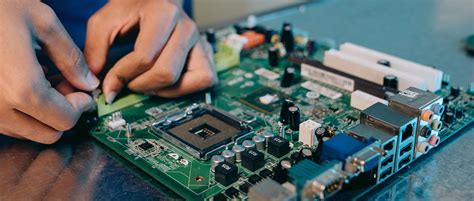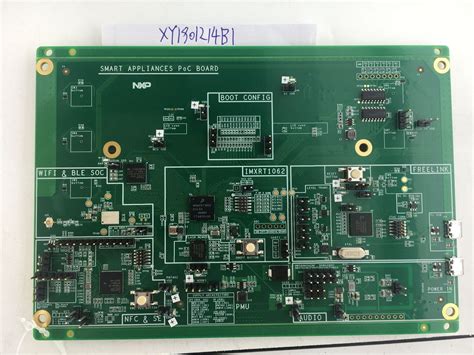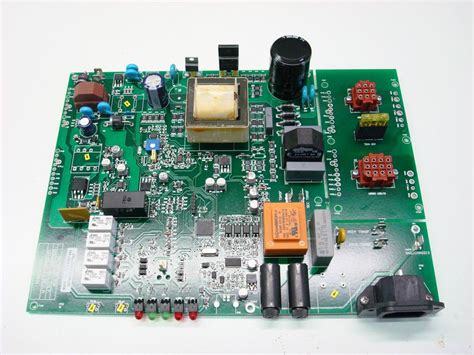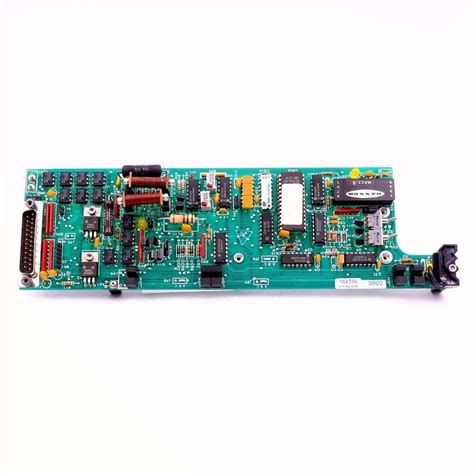What is PCB output value?
1.Introduction to PCB
PCB is the abbreviation of Printed Circuit Board. Printed circuit board is a substrate for assembling electronic parts. It is a printed board that forms point-to-point connections and printed components on a general substrate according to a predetermined design. The main function of this product is to connect various electronic components to form a predetermined circuit, play the role of relay transmission, and is a key electronic interconnection part of electronic products. It is known as the “mother of electronic products”.
As a substrate and key interconnection part for electronic parts, printed circuit boards are required for any electronic equipment or product. Its downstream industries cover a wide range, involving general consumer electronics, information, communications, medical, and even aerospace technology products.
With the development of science and technology, the demand for electronic information processing of various products has gradually increased, and emerging electronic products have continued to emerge, which has continuously expanded the use and market of PCB products. The replacement of emerging 3G mobile phones, automotive electronics, LCD, IPTV, digital TV, and computers will also bring a larger PCB market than the current traditional market.
PCB is the most basic component of the information electronics industry and belongs to the electronic component industry in the electronic component industry. According to the number of layers, PCB is divided into single-sided board (SSB), double-sided board (DSB) and multi-layer board (MLB); according to the softness, PCB is divided into rigid printed circuit board (RPC) and flexible printed circuit board (FPC). In industrial research, the PCB industry is generally divided into six major sub-industries, including single-sided board, double-sided board, conventional multi-layer board, flexible board, HDI (high-density sintering) board, and packaging substrate, according to the basic classification of the above PCB products.
The PCB industry is a typical cyclical industry. From a historical perspective, its cycle is generally 7-8 years, but with the acceleration of downstream demand updates, it has gradually shortened to about 4 years. The recent peaks of prosperity appeared in 1995, 2000 and 2004 respectively. Unlike products such as LCD panels and memory, the price trend of CCL is mainly driven by the cost of raw materials, while the price of PCB is greatly affected by the balance of supply and demand.

2.PCB Industry Chain
According to the upstream and downstream of the industrial chain, it can be divided into raw materials-copper clad laminates-printed circuit boards-electronic product applications, and the relationship is simply expressed as follows:
Fiberglass cloth: Fiberglass cloth is one of the raw materials of copper clad laminates. It is woven from glass fiber yarn and accounts for about 40% (thick plates) and 25% (thin plates) of the cost of copper clad laminates. Fiberglass yarn is calcined into liquid in a kiln from raw materials such as silica sand, and is pulled into extremely fine glass fibers through extremely fine alloy nozzles, and then hundreds of glass fibers are twisted into fiberglass yarn.
The construction investment of the kiln is huge, generally requiring hundreds of millions of funds, and once ignited, it must be produced 24 hours a day, and the entry and exit costs are huge. Fiberglass cloth manufacturing is similar to weaving companies. The production capacity and quality can be controlled by controlling the speed, and the specifications are relatively simple and stable.
There has been almost no significant change in specifications since World War II. Unlike CCL, the price of fiberglass cloth is most affected by supply and demand. In recent years, the price has fluctuated between US$0.50-1.00/m. Currently, the production capacity of Taiwan and mainland China accounts for about 70% of the world.
Copper foil: Copper foil is the raw material with the largest proportion of the cost of copper clad laminates, accounting for about 30% (thick plates) and 50% (thin plates) of the cost of copper clad laminates. Therefore, the price increase of copper foil is the main driving force for the price increase of copper clad laminates.
The price of copper foil is closely reflected in the price changes of copper, but the bargaining power is weak. With the rising copper prices recently, copper foil manufacturers are in a difficult situation. Many companies are forced to close down or be merged. Even if copper clad laminate manufacturers accept the increase in copper foil prices, copper foil manufacturers are still in a general loss-making state. Due to the emergence of price gaps, it is very likely that there will be another wave of price increases in the first quarter of 2006, which may drive up CCL prices.
Copper clad laminate: Copper clad laminate is a product of glass fiber cloth and copper foil pressed together with epoxy resin as a fusion agent. It is the direct raw material of PCB. After etching, electroplating, and lamination of multilayer boards, it is made into a printed circuit board. The capital demand of the copper clad laminate industry is not high, about 30-40 million yuan, and production can be stopped or converted at any time. In the upstream and downstream industrial chain structure, CCL has the strongest bargaining power. It not only has a strong voice in the procurement of raw materials such as glass fiber cloth and copper foil, but also can pass on the pressure of rising costs to downstream PCB manufacturers as long as the downstream demand is acceptable.
In the third quarter of this year, copper clad laminates began to increase in price, with a price increase of about 5-8%. The main driving force is to reflect the price increase of copper foil, and the strong downstream demand can absorb the price increase pressure passed on by CCL manufacturers. Nanya, the world’s second largest copper clad laminate manufacturer, also raised its product prices on December 15, showing that at least in the first quarter of 2006, the demand for PCBs was good.

3..Development of the international PCB industry
At present, the output value of the global PCB industry accounts for more than a quarter of the total output value of the electronic component industry, and is the largest industry in various electronic component sub-industries, with an industry scale of 40 billion US dollars. At the same time, due to its unique position in the electronic basic industry, it has become the most active industry in the contemporary electronic component industry. In 2003 and 2004, the global PCB output value was 34.4 billion US dollars and 40.1 billion US dollars, respectively, with year-on-year growth rates of 5.27% and 16.47%, respectively.

4..Development of the domestic PCB industry
my country’s PCB research and development work began in 1956, and from 1963 to 1978, it gradually expanded to form the PCB industry. More than 20 years after the reform and opening up, due to the introduction of foreign advanced technology and equipment, single-sided boards, double-sided boards and multi-layer boards have all achieved rapid development, and the domestic PCB industry has gradually developed from small to large.
In 2002, China’s PCB output value exceeded Taiwan, becoming the third largest PCB producer.
In 2003, the PCB output value and import and export volume exceeded US$6 billion, making it the world’s second largest PCB producer. In recent years, my country’s PCB industry has maintained a high growth rate of about 20%, and is expected to surpass Japan around 2010 to become the country with the largest PCB output value and the most active technological development in the world.
From the perspective of output structure, the main products of China’s PCB industry have shifted from single-sided boards and double-sided boards to multi-layer boards, and are being upgraded from 4 to 6 layers to 6 to 8 layers or more. With the rapid growth of multi-layer boards, HDI boards, and flexible boards, my country’s PCB industry structure is gradually being optimized and improved.
However, although my country’s PCB industry has made great progress, there is still a big gap compared with advanced countries, and there is still a lot of room for improvement and improvement in the future. First, my country entered the PCB industry relatively late, and there is no special PCB R&D institution. There is a big gap with foreign manufacturers in the R&D capabilities of some new technologies.
Secondly, from the perspective of product structure, it is still mainly based on the production of medium and low-layer boards. Although FPC, HDI and other products have grown rapidly, their proportion is still not high due to the small base. Thirdly, most of my country’s PCB production equipment relies on imports, and some core raw materials can only rely on imports. The incompleteness of the industrial chain has also hindered the development of domestic PCB series companies.
5. Industry Overview
As the most widely used electronic component product, PCB has a strong vitality. Whether judging from the supply and demand relationship or from the historical cycle, the beginning of 2006 is the stage when the industry entered the boom climbing stage. The continued strong downstream demand has driven the shipments of various manufacturers in the PCB industry chain layer by layer, forming a situation of “not off-season” at least in the first quarter of 2006. The industry rating was raised from “avoid” to “good”.







